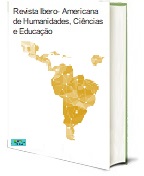PHARMACEUTICAL ACTION IN AESTHETICS AND THE USE OF HYALURONIC ACID
DOI:
https://doi.org/10.51891/rease.v8i5.5243Keywords:
Hyaluronic Acid. Pharmaceutical. Aesthetic and application.Abstract
Over time, our body, especially the skin, goes through changes such as aging. It turns out that over time the skin is the one that ends up suffering the most and with that the aesthetic damage is greater due to intrinsic and extrinsic factors. The low levels of hyaluronic acid is one of the factors that decrease the hydration of the skin during the aging period and can end up with some wrinkles among other things. With the appearance of wrinkles, the skin becoming less hydrated begins aesthetic procedures such as the application of hyaluronic acid to remove dark circles, how to help with wrinkles and even the application on the lips. Over the years we can see that the static market is increasing and being much more sought after for these applications. And with that, like other areas, the pharmaceutical area was growing within this aesthetic area and gaining strength and confidence to work in this branch, being able to perform procedures, being recognized and improving people's self-esteem on a daily basis and showing great results.
Downloads
Downloads
Published
How to Cite
Issue
Section
Categories
License
Atribuição CC BY

